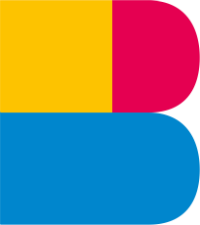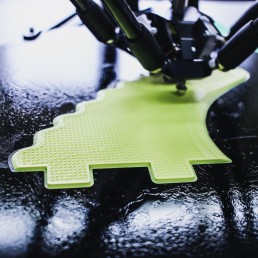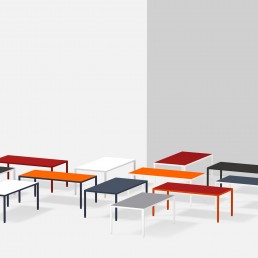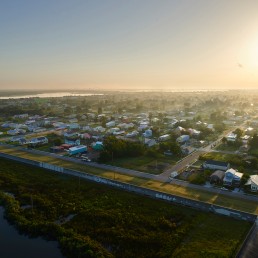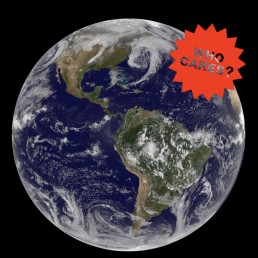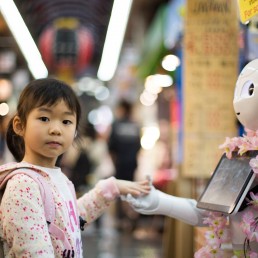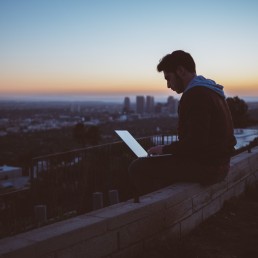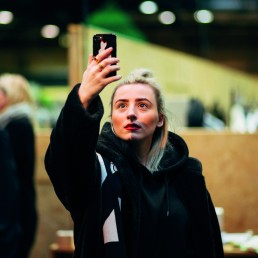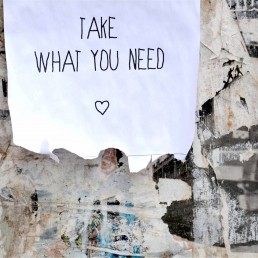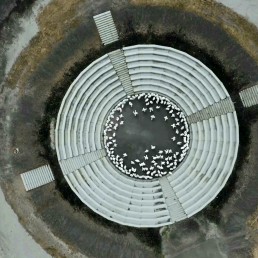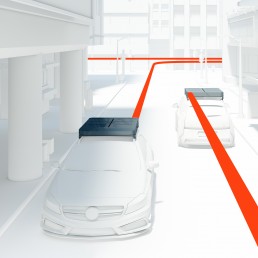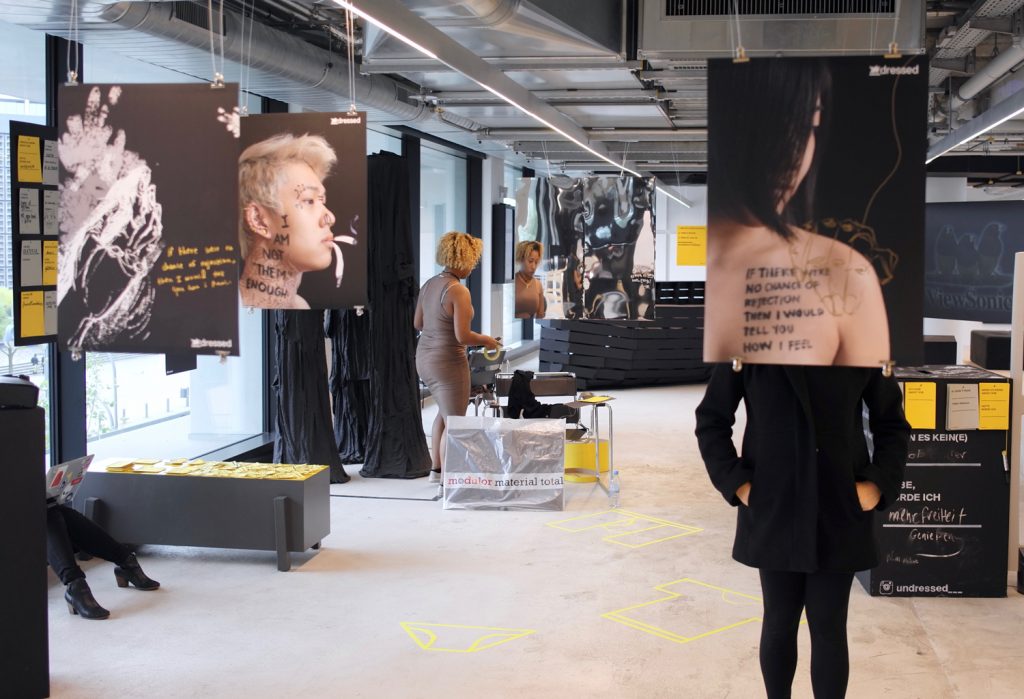
B > LA > B
How Can an Enduring Bridge Be Built Between Two Creative Epicenters?
By Nikolaus Hafermaas, April 2017, Pasadena, California
A recent UNESCO study on the cultural and creative industries ranks both Berlin and Los Angeles among the world’s ten leading epicenters of creativity. This study based its rankings on a number of factors, including the percentage of residents working within the creative industries, openness to cultural diversity, technological assets and fertile entrepreneurial environments.
Over the last few decades, both Berlin and Los Angeles have evolved to house a vibrant community of global talent, whose proficiency in art and design plays a crucial role in shaping the future of their industrial landscapes. This groundswell of creativity was made possible by certain common traits, which make Berlin and LA highly compatible with one another.
Among the most decisive of these shared characteristics is a tremendous cultural diversity, and the drive for constant reinvention. Berlin and LA have what could be called vertical porosity, an economic phenomenon that allows for creative ideas to rise from the bottom of the social ladder and bubble up to the top. Cultural trends born in various subcultures quickly find their way into the mainstream, allowing for rapid innovation in design, technology, and cultural expression. A shared spirit of self-reliance and personal reinvention, and a general atmosphere of raw opportunity have been instrumental in fueling the thriving startup and maker scenes in both cities.
At the same time, Berlin and LA have their own very unique creative profiles, which make them increasingly complementary to each other. To “build an enduring bridge” is to connect the unique assets of both creative environments.
Berlin’s magnetism to the creative class has dramatically increased over the past twenty years. Ironically, the city’s economic stagnation in the early 2000s, which came after a very brief post-reunification gold rush, turned out to be fertile ground on which the German capital’s current status as creative global hub could flourish. The combination of cheap inner-city property and strong endorsement of creative freedom helped revive Berlin, which now draws artists and cultural entrepreneurs from around the world. Former governing mayor Klaus Wowereit famously declared “Berlin ist arm, aber sexy” (“Berlin is poor but sexy”), a philosophy that helped usher in a period where the city’s creative subculture began to evolve into a viable creative industry.
Tech and web entrepreneurs, who are following in increasing numbers artists, designers, writers, and musicians from around the world, have established themselves in Berlin. Meanwhile, the city has already produced some globally recognized tech startup successes, an industrial wave that has lead the international press to name Berlin the “Silicon Valley of Europe”.
What does Berlin have that is attractive to LA? For one, Berlin’s far greater urban density mixes living and work spaces, facilitated by a shared, highly integrated transport system. Informal encounters between greatly diverse populations are a daily reality, making the city a place of inclusion and constant creative inspiration. Built on rich sediments of cultural heritage, Berlin’s pavement is literally vibrating with creative energy from the underground.
Creative Berliners are highly resourceful and have often found a greater balance between their personal and professional lives than their Californian counterparts. Generally, self-expression comes more naturally, and rarely will a Berliner ask you on the first encounter what you do for a living. Berlin offers a heightened sense of freedom in a major metropolis, which is attractive not only to creative individuals from all over the world, but increasingly, to global corporate outposts harboring creative ambitions.
Conversely, what does Los Angeles have that Berlin can benefit from? With its massive scale and Pacific Rim location, LA is a truly global hub. Situated in extreme topography and under near-constant threat of natural disaster, LA emanates a sense of urgency and grand ambition, it is a proving ground for future trends in technology and energy, in media and society.
Los Angeles is the birthplace of many disruptive innovations that have shaped the world’s approach to creativity, from the invention of skunkworks to the Hollywood movie production model that has become a template for flexible creative collaborations worldwide. This permanent state of startup is the very foundation of Silicon Valley and its sister community Silicon Beach in Venice, California. Some of the world’s most disruptive brands call Southern California home, including tens of thousands of fail-forward startups that rarely see the light of day. The creative workforce that powers these high-tech corporations reflects the cultural and ethnic diversity of the region.
As design has matured into one of the greatest drivers of innovation, a global perspective has become necessary. I believe that:
– the designer’s role has evolved from problem-solver to opportunity-seeker
– the creative process is becoming increasingly networked and participatory
– designers have to embrace complexity, ambiguity, and diversity more than ever before The skillset of successful creatives is evolving to include greater socio-cultural awareness and empathy, as well as the ability for radical collaboration.
In our complex and multi-faceted world, cultural immersion and creative exchange have become the most effective method for design; I therefore believe that bridging creative epicenters is paramount. Berlin and LA are ideal counterparts to become more closely connected, because:
– common traits make both creative hubs highly compatible with each other
– at the same time, Berlin and LA each have very unique qualities that make them highly complementary
– bridging both cities creates a best-of-both-worlds scenario for creative industries.
These bridges are built simultaneously and on a multitude of levels; together they form a highly sustainable and robust connection, through:
– informal and formal creative networks
– festivals and events both on a grassroots level and officially supported by startups and corporations
– academic satellites and joint projects, reaching deep into the local creative industries, supported by alumni, industry, and cultural institutions
– artist residencies and exchanges, often leading to internships, jobs, and entrepreneurial opportunities.
An existing example for bridging Berlin and LA is the Testlab Berlin project series by ArtCenter College of Design from Pasadena, California. Known for its educational rigor and excellence in a broad range of art and design disciplines, ArtCenter’s faculty predominantly consists of practicing creative professionals. ArtCenter’s student population hails from all over the world, with a high percentage of Asian students. While ArtCenter’s Pasadena campus provides a high-octane learning environment in close proximity to Southern California’s creative industry leaders, it has become the school’s mission to complement its educational experience with a well-rounded program of study-abroad opportunities.
Over the past ten years, Berlin has become ArtCenter’s most popular study-abroad destination, and a series of semester-long Testlab Berlin projects have come out of this transatlantic program. Different from a traditional student exchange program, where students often just relocate from one sheltered classroom setting to another (called “box-to-box”), Testlab Berlin, by contrast, follows more the model of a creative agency that exists for the duration of a specific design project. ArtCenter students of different art and design majors form transdisciplinary teams to tackle a creative challenge. These projects use art and design strategies to envision how we will live in the future and are often sponsored by brands that are seeking genuinely fresh creative insights derived from first-hand cultural immersion into the multi-cultural laboratory that is Berlin.
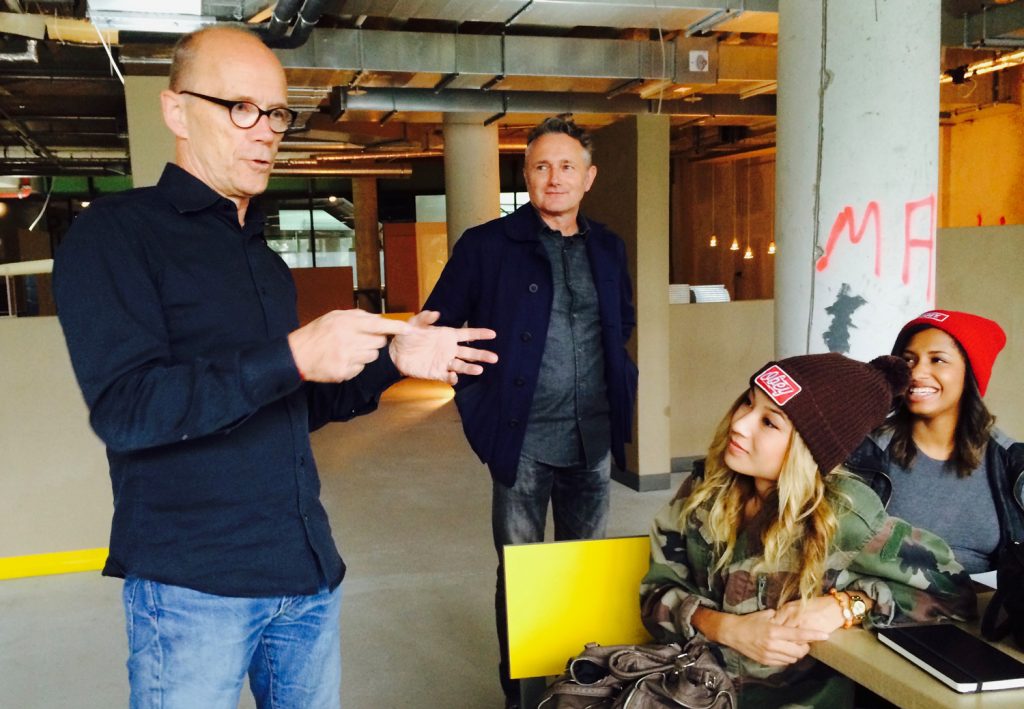
Testlab Berlin projects are designed to deliberately remove the students from a traditional school setting, creating instead the atmosphere of a pop-up design office, organized and operated like a professional creative agency, running for the span of one semester (90 days), and organized by faculty and students. A network of high-caliber members of Berlin’s creative industries (communication and design agencies, artists and architects) supports the studio as dedicated mentors.
The most important player in this creative collaboration, however, is the urban environment. The German capital’s thriving cultural and subcultural life provides inspiration and raw material for innovative creative solutions. At the same time, the city is a unique testing ground for scenarios and prototypes. In this studio model, insights are generated through participatory research and prototyping. Making informs strategy, which can lead to genuinely unexpected creative solutions. In recent years, Testlab projects have tackled future scenarios from health and wellness to the retail experience, from alternative tourism to urban mobility.
Participants from past programs continue to collaborate with each other on projects beyond the school. Through their shared experience, students form a sort of multidisciplinary “dream team”, adaptable to any environment: They land on their feet, set up camp, and begin tackling challenges through their creative work. In addition to this academic bond, an increasing number of past Testlab students decide to return to Berlin for professional work, transferring those deep formative relationships to the city’s leading agencies and thus creating an enduring talent exchange between LA and Berlin.
In this regard, what makes Berlin and LA so compatible with each other is the open space for creative expression (literally and figuratively). What makes both cities so complementary is the mutual fascination in the otherness of each environment. Bridging both creative epicenters in enduring and sustainable ways is critical for the continued evolution of the creative industry in both places. This is a call to action for building more formats and programs of mutual cross-pollination that open up new horizons for innovation by fully tapping into our shared creative potential. ■
